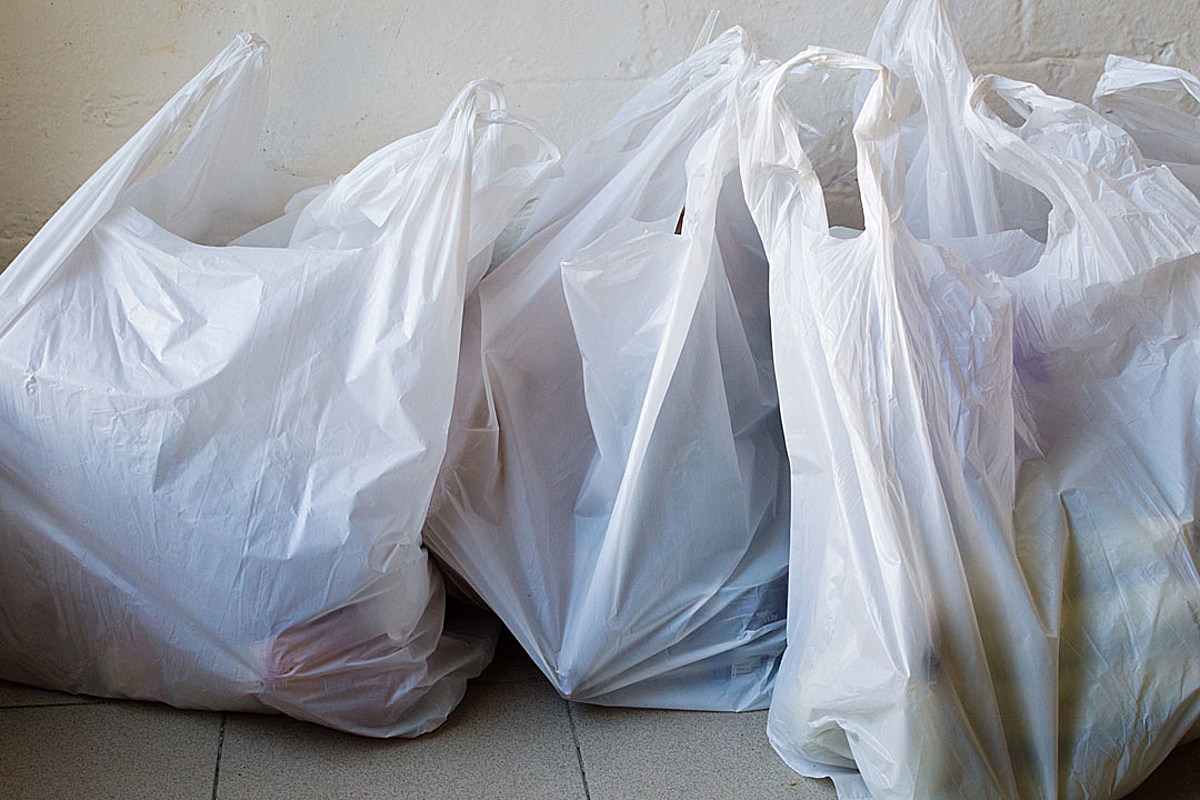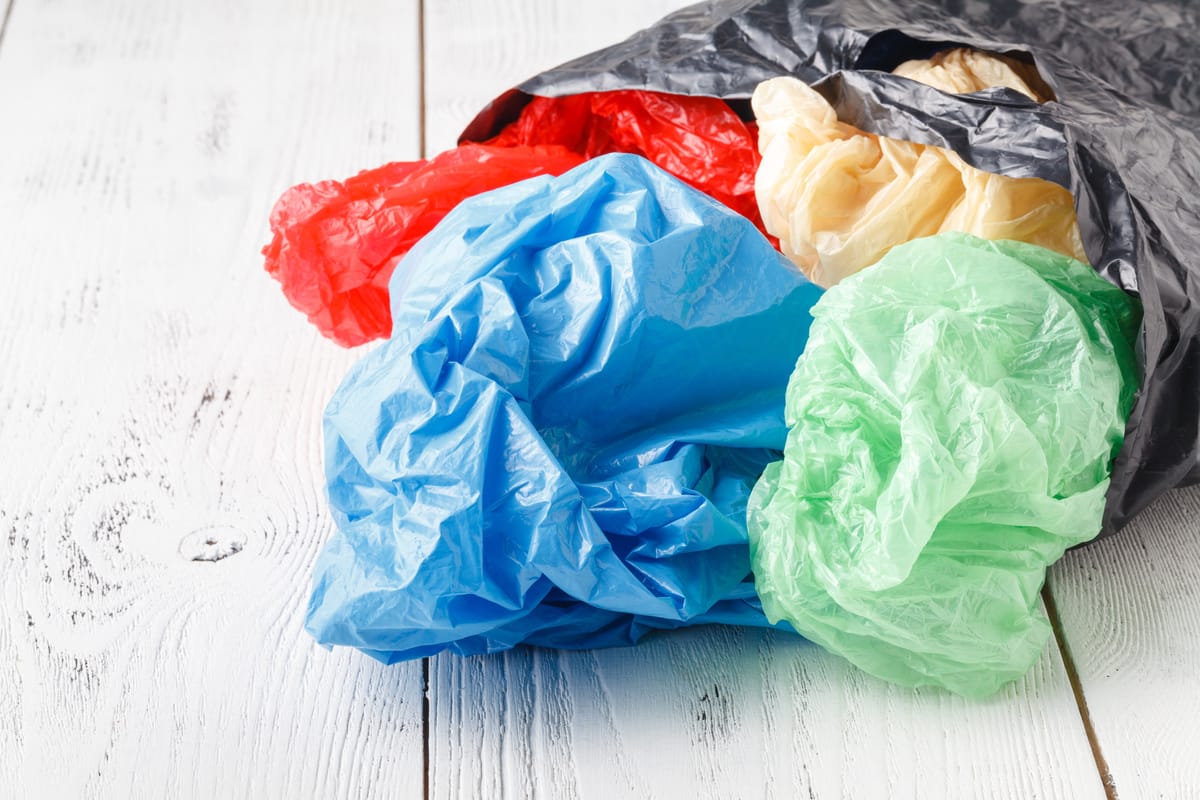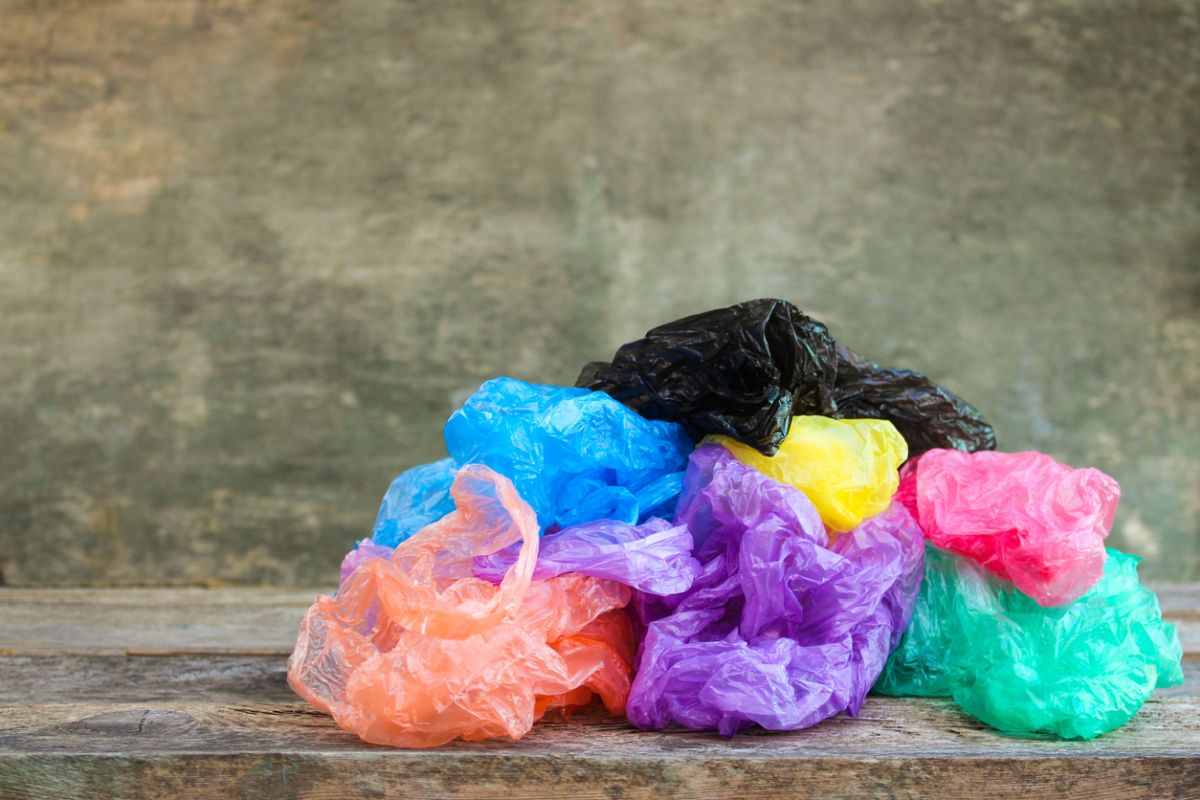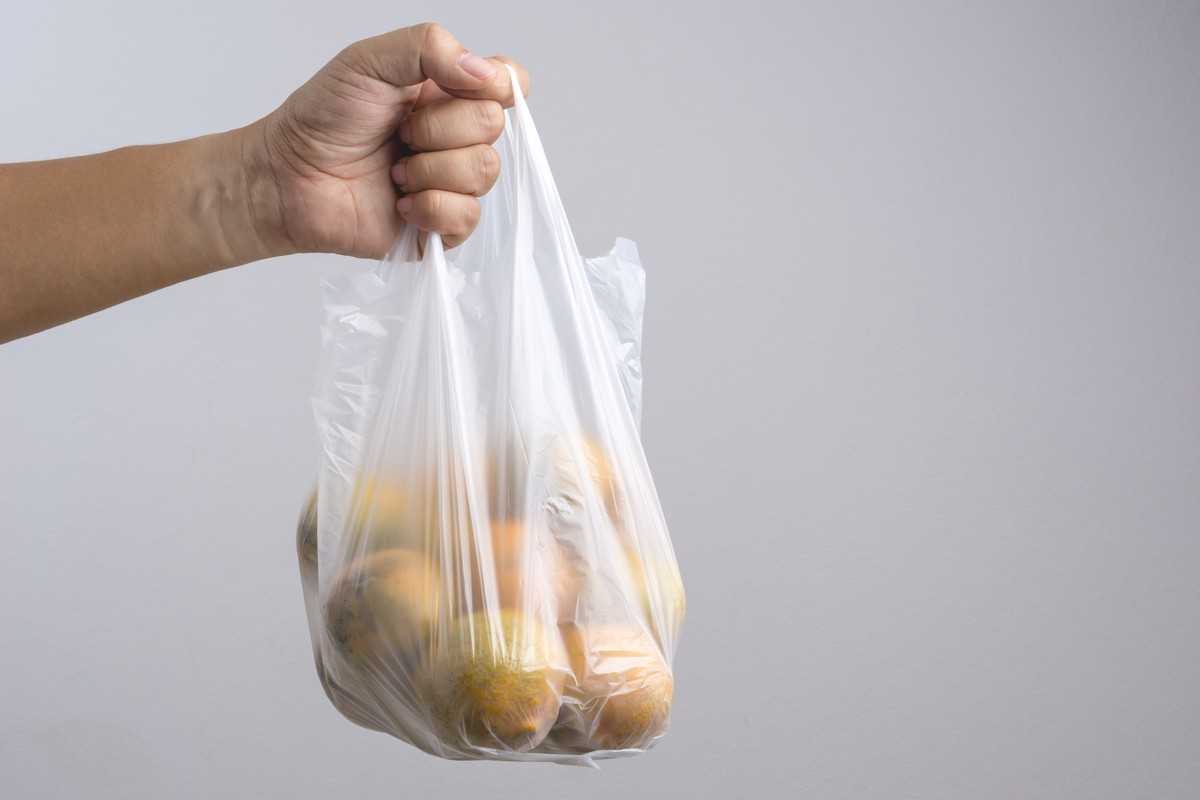Here we will mention what are plastic bags made of and what materials are being used in making them. Plastic bags are extremely ubiquitous and can be found pretty much anywhere these days, from supermarkets to farmer's markets. They assist us in moving all of our essentials from location A to location B! But have you ever thought about where they come from or how they're made? Before they make it to the shelves of stores, plastic bags are subjected to a wide variety of processes. Let's take a more in-depth look at the manufacturing process of plastic bags. It's not as easy as it may seem at first glance! Polyethylene, and more specifically high-density polyethylene, is the primary component of the vast majority of plastic bags. Before the material can be cut, shaped into bags, or printed, tons of small plastic pellets are liquefied by subjecting them to intense heat and pressure in a pressurized environment.  The first step in the production of polyethylene is the creation of ethylene, a type of gas that can be found in coal gas, natural gas, and crude oil. Polyethylene is created from ethylene. Polyethylene is the material that is produced as a byproduct when ethylene is combined with a catalyst such as benzyl peroxide to create the process known as polymerization. Plastic bags and other types of commercial packaging are made from polyethylene. How are plastic shopping bags manufactured? The production of plastic bags utilizes a technique known as blown film extrusion. Polyethylene pellets are melted down, the molten material is blown out into a thin sheet, and then the bags are manufactured. To produce plastic bags, the following steps are taken:
The first step in the production of polyethylene is the creation of ethylene, a type of gas that can be found in coal gas, natural gas, and crude oil. Polyethylene is created from ethylene. Polyethylene is the material that is produced as a byproduct when ethylene is combined with a catalyst such as benzyl peroxide to create the process known as polymerization. Plastic bags and other types of commercial packaging are made from polyethylene. How are plastic shopping bags manufactured? The production of plastic bags utilizes a technique known as blown film extrusion. Polyethylene pellets are melted down, the molten material is blown out into a thin sheet, and then the bags are manufactured. To produce plastic bags, the following steps are taken:
- First, polyethylene pellets are loaded into a hopper for further processing.
- In the second step, the pellets are subjected to heat and pressure in order to liquefy the plastic.
- In the third step of the procedure, the liquefied plastic is transformed into the form of a tube by means of a technique known as blown film extrusion.
- In the fourth step, the plastic tube begins to cool off while massive rollers work to flatten it into a single, uniformly thin sheet of plastic.
- The plastic is then sliced to the desired width, which is the fifth step.
- Sixth Step: After the plastic has been cut, it is rolled up onto a massive single roll of plastic.
- Step Seven: After that, an ink that is based on alcohol is used to print on the plastic.
- After that, the plastic is molded into the desired bag shape, which is the eighth step.
- In the ninth step, the handles are created by using a large punch to make a hole in the top of each bag.
- In the tenth step of the process, the bag's seams are heat-sealed by pressing together two pieces of plastic that have the same shape.

What plastic bags are made of
Plastic bags are being made of different materials. The functionality is what determines what should be used for making plastic bags. Putting the Plastic in the Pouring A massive hopper is loaded with numerous tons of various sized polyethylene pellets. The precise number of pellets that are put into each bag is determined by the quantity of bags that are being produced. Step 2 The process of melting the plastic As soon as the polyethylene pellets enter the hopper, they are subjected to intense heat and pressure. Because of this, the pellets will begin to melt and turn into a liquid state. Step 3 The Extrusion of Blown Film Through a technique known as blown film extrusion, the molten plastic is extruded in the form of a massive tube as it is blown upward. This is the process in which molten plastic is inflated with air to create a large tube made of plastic. Step 4 Making the Tube More Flat When the tube of plastic has cooled, it is passed through enormous rollers, which compress it into a single large sheet. Step 5 Reduce Your Use of Plastic The sheet of plastic is then passed through a pair of razors that have been positioned on either side of the sheet. This allows the plastic to be cut to the desired width. The plastic that is in excess is thrown away and the remainder is saved for use in packaging that is less extensive.  Step 6 The process of rolling the plastic The plastic sheet is wound tightly onto a massive roll so that it can be moved on to the subsequent stage of the manufacturing process with minimal effort. Step 7 Personalization of the Bags Printing ink that is based on alcohol is done on the plastic. It could be a restaurant, a grocery store, or any other type of business that sends in their logo or design. After that, it will be printed in large quantities on the bags that are available. Step 8 The Modeling of the Plastic When the plastic sheets are ready, they are fed through a mechanical roller that, using a spinning disc, shapes the bottom and sides of the bag. Step 9 Making the Cuts for the Holes A sizable hole punch is utilized in the production of the bag handles. It is necessary for customers to be able to easily carry their bags, so the punch stamps through each layer of plastic.
Step 6 The process of rolling the plastic The plastic sheet is wound tightly onto a massive roll so that it can be moved on to the subsequent stage of the manufacturing process with minimal effort. Step 7 Personalization of the Bags Printing ink that is based on alcohol is done on the plastic. It could be a restaurant, a grocery store, or any other type of business that sends in their logo or design. After that, it will be printed in large quantities on the bags that are available. Step 8 The Modeling of the Plastic When the plastic sheets are ready, they are fed through a mechanical roller that, using a spinning disc, shapes the bottom and sides of the bag. Step 9 Making the Cuts for the Holes A sizable hole punch is utilized in the production of the bag handles. It is necessary for customers to be able to easily carry their bags, so the punch stamps through each layer of plastic.  Step 10 Putting the Lid on the Bag The edges of two pieces of plastic with the same shape are sealed using heat after the pieces are pressed together. This secures the sides of the bag together, allowing for more items to be stored within! Plastic bags are manufactured all over the world, but the United States, Australia, and Germany account for the vast majority of production facilities. The typical facility is quite large because there are many stages in the manufacturing process, each of which requires specific pieces of industrial equipment. The majority of the production process for plastic bags is carried out by automated machinery. Plastic sheets are converted into the shopping bags and other types of bags that we are familiar with and enjoy using by going through a process that involves a number of belts, rollers, and cutting tools. When it comes to producing consistent sizes and materials, precision is absolutely necessary. When it comes to producing the bags, using automated processes is your best bet for achieving a high level of precision consistently. That is the reason why plastic bags are not made by hand but rather by machines! Are Printing Options Available for Plastic Bags? Plastic bags are a great medium for printed material. The printing process is typically carried out by a manufacturer of bags or by a distributor of promotional products. The majority of imprints on shopping bags are either the logos of grocery stores, memorable phrases, or slogans. Advertising on plastic bags can increase consumer recall of a brand and motivate them to make additional purchases. In addition to that, customers frequently repurpose these bags, which means that your brand name will be seen repeatedly over and over again!
Step 10 Putting the Lid on the Bag The edges of two pieces of plastic with the same shape are sealed using heat after the pieces are pressed together. This secures the sides of the bag together, allowing for more items to be stored within! Plastic bags are manufactured all over the world, but the United States, Australia, and Germany account for the vast majority of production facilities. The typical facility is quite large because there are many stages in the manufacturing process, each of which requires specific pieces of industrial equipment. The majority of the production process for plastic bags is carried out by automated machinery. Plastic sheets are converted into the shopping bags and other types of bags that we are familiar with and enjoy using by going through a process that involves a number of belts, rollers, and cutting tools. When it comes to producing consistent sizes and materials, precision is absolutely necessary. When it comes to producing the bags, using automated processes is your best bet for achieving a high level of precision consistently. That is the reason why plastic bags are not made by hand but rather by machines! Are Printing Options Available for Plastic Bags? Plastic bags are a great medium for printed material. The printing process is typically carried out by a manufacturer of bags or by a distributor of promotional products. The majority of imprints on shopping bags are either the logos of grocery stores, memorable phrases, or slogans. Advertising on plastic bags can increase consumer recall of a brand and motivate them to make additional purchases. In addition to that, customers frequently repurpose these bags, which means that your brand name will be seen repeatedly over and over again! 
Plastic bags
Plastic made bags have replaced paper bags in grocery stores because of their lower cost compared to paper bags. The handles on plastic grocery bags make them much simpler to carry than their paper counterparts. In days gone by, paper bags did not come with handles attached to them. Because of this, customers were unable to purchase as much because the bags were cumbersome to carry. When paper grocery bags were still commonly used in the United States, many people held the misconception that their plastic counterparts were more eco-friendly than their paper counterparts. To make paper bags required cutting down trees, and at the time, people believed that using plastic bags was a better option for the environment than using paper bags. What kinds of characteristics do plastic bags have? The use of plastic bags is helpful for a multitude of reasons. Because of both their adaptability and their sturdiness, they are an excellent choice for carrying the things that you need to move from one location to another.  The following is a list of the characteristics of plastic bags: Flexible The material that is used to make plastic bags is bendable, so they have some room to move around inside. Plastic bags have flexible walls, which means that they are able to accommodate a wide variety of items. Strong Plastic bags have an average weight capacity of up to 50 pounds. Plastic bags are an excellent choice for use in grocery stores due to their high level of strength. They are able to accommodate a wide variety of grocery items, including cans of soup and orange juice cartons. Water-Resistant Are you getting wet while carrying your groceries from the car into the house during the storm? Thank goodness you have some plastic bags with you. They have a natural resistance to water, which ensures that your groceries will remain dry. Affordable Paper bags are more expensive than their plastic counterparts. Because of this, they are an excellent option for proprietors of small businesses who are concerned about costs. There is no getting around the fact that manufacturing plastic bags requires a significant amount of labor. To our good fortune, there are many different kinds of specialized tools and pieces of equipment available on the market that can make the process more effective. When you see a plastic bag in the future, you should keep in mind all of the steps it went through before it got into your hands!
The following is a list of the characteristics of plastic bags: Flexible The material that is used to make plastic bags is bendable, so they have some room to move around inside. Plastic bags have flexible walls, which means that they are able to accommodate a wide variety of items. Strong Plastic bags have an average weight capacity of up to 50 pounds. Plastic bags are an excellent choice for use in grocery stores due to their high level of strength. They are able to accommodate a wide variety of grocery items, including cans of soup and orange juice cartons. Water-Resistant Are you getting wet while carrying your groceries from the car into the house during the storm? Thank goodness you have some plastic bags with you. They have a natural resistance to water, which ensures that your groceries will remain dry. Affordable Paper bags are more expensive than their plastic counterparts. Because of this, they are an excellent option for proprietors of small businesses who are concerned about costs. There is no getting around the fact that manufacturing plastic bags requires a significant amount of labor. To our good fortune, there are many different kinds of specialized tools and pieces of equipment available on the market that can make the process more effective. When you see a plastic bag in the future, you should keep in mind all of the steps it went through before it got into your hands! 
Plastic bags materials
Plastic bags have replaced paper bags in grocery stores because of their lower cost compared to paper bags and other materials bags. The handles on plastic grocery bags make them much simpler to carry than their paper counterparts. In days gone by, paper bags did not come with handles attached to them. Because of this, customers were unable to purchase as much because the bags were cumbersome to carry. When paper grocery bags were still commonly used in the United States, many people held the misconception that their plastic counterparts were more eco-friendly than their paper counterparts. To make paper bags required cutting down trees, and at the time, people believed that using plastic bags was a better option for the environment than using paper bags. What kinds of characteristics do plastic bags have? The use of plastic bags is helpful for a multitude of reasons. Because of both their adaptability and their sturdiness, they are an excellent choice for carrying the things that you need to move from one location to another. The following is a list of the characteristics of plastic bags: Flexible The material that is used to make plastic bags is bendable, so they have some room to move around inside. Plastic bags have flexible walls, which means that they are able to accommodate a wide variety of items.  Strong Plastic bags have an average weight capacity of up to 50 pounds. Plastic bags are an excellent choice for use in grocery stores due to their high level of strength. They are able to accommodate a wide variety of grocery items, including cans of soup and orange juice cartons. Water-Resistant Are you getting wet while carrying your groceries from the car into the house during the storm? Thank goodness you have some plastic bags with you. They have a natural resistance to water, which ensures that your groceries will remain dry. Affordable Paper bags are more expensive than their plastic counterparts. Because of this, they are an excellent option for proprietors of small businesses who are concerned about costs. There is no getting around the fact that manufacturing plastic bags requires a significant amount of labor. To our good fortune, there are many different kinds of specialized tools and the pieces of equipment available on the market that can make the process more effective. When you see a plastic bag in the future, you should keep in mind all of the steps it went through before it got into your hands!
Strong Plastic bags have an average weight capacity of up to 50 pounds. Plastic bags are an excellent choice for use in grocery stores due to their high level of strength. They are able to accommodate a wide variety of grocery items, including cans of soup and orange juice cartons. Water-Resistant Are you getting wet while carrying your groceries from the car into the house during the storm? Thank goodness you have some plastic bags with you. They have a natural resistance to water, which ensures that your groceries will remain dry. Affordable Paper bags are more expensive than their plastic counterparts. Because of this, they are an excellent option for proprietors of small businesses who are concerned about costs. There is no getting around the fact that manufacturing plastic bags requires a significant amount of labor. To our good fortune, there are many different kinds of specialized tools and the pieces of equipment available on the market that can make the process more effective. When you see a plastic bag in the future, you should keep in mind all of the steps it went through before it got into your hands!
